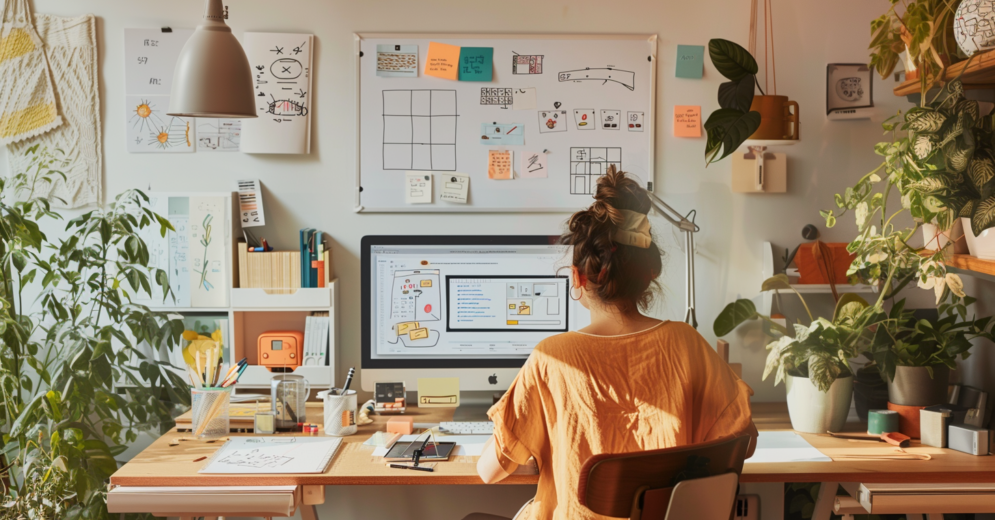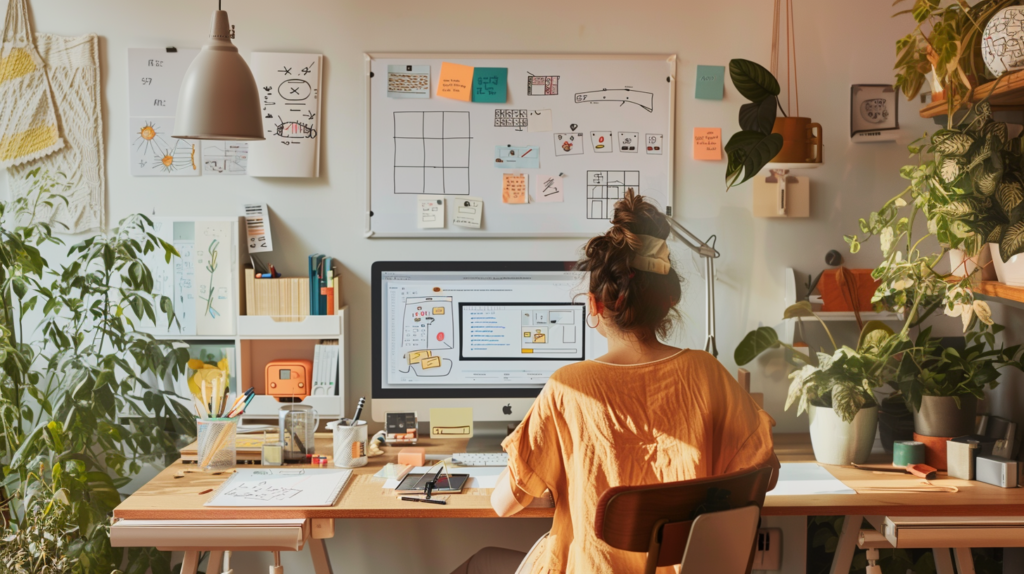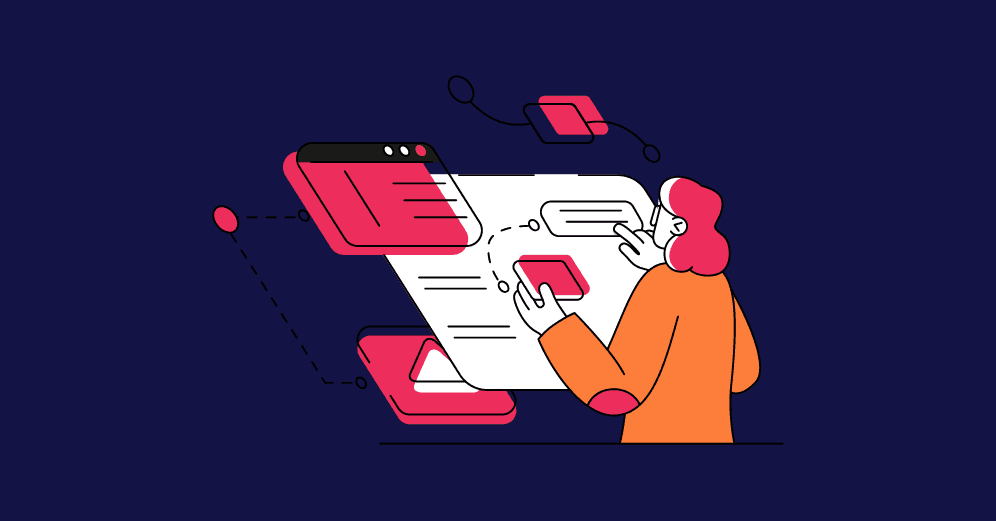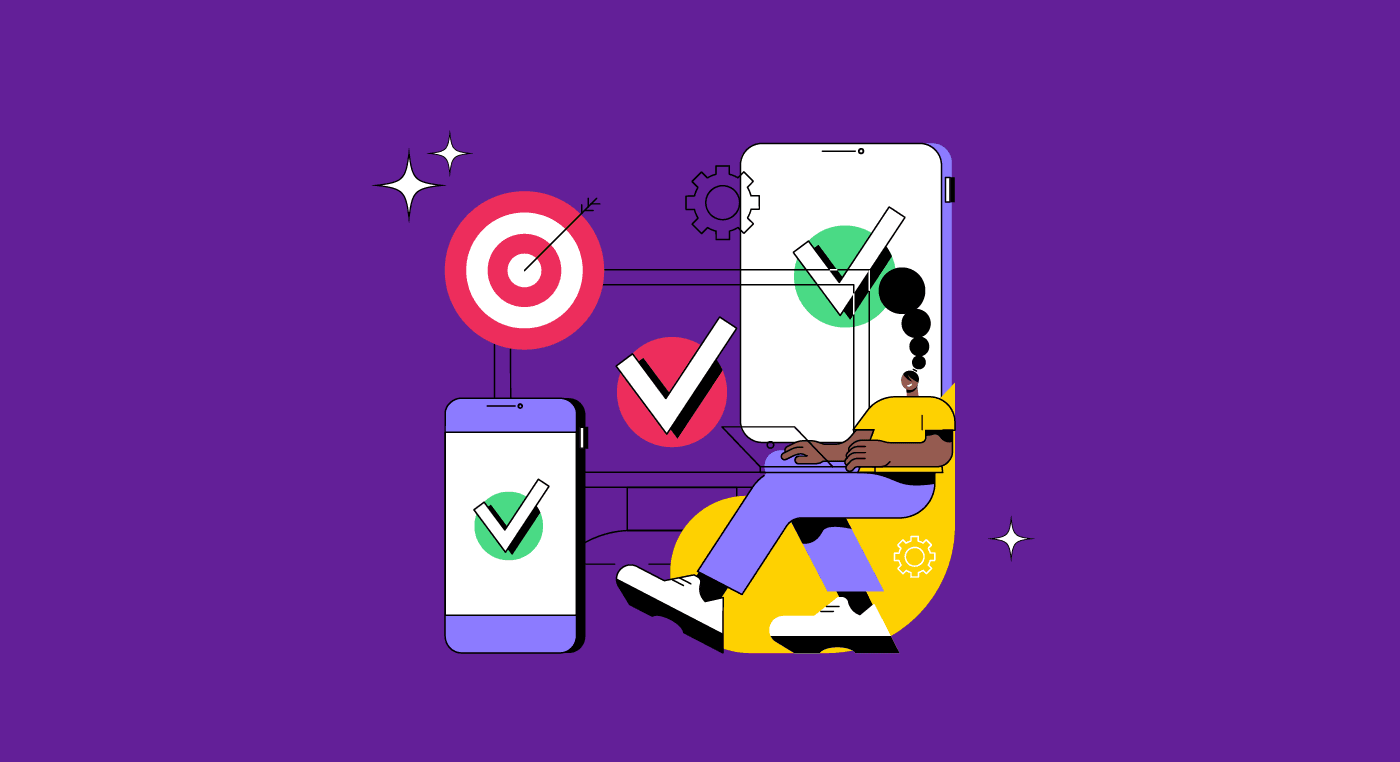If you're starting out or considering transitioning to the field of UX or Product Design, understanding the importance of practice in your professional development is crucial.
Often, we focus so much on absorbing theoretical content that we forget the relevance of putting this knowledge into action.
In UX and Product Design, theory provides us with the fundamentals: usability principles, understanding user behavior, research methodologies, among others. These concepts are crucial and form the basis of what we do.
However, it is practice that transforms this knowledge into real skills. When you work on a practical project, whether it's freelance work, a collaboration, or even a fictional exercise, you learn to apply these principles in real situations.
It is practice that teaches you to solve problems, adapt theories to the specific context of each project, and truly understand the needs of users.
Furthermore, practical projects can be a significant differentiator in your career. In a competitive job market, having a portfolio that demonstrates your ability to apply Product Design knowledge in concrete projects can set you apart from other candidates.
Recruiters and managers are not just looking for those who know the theory, but for those who know how to make the theory work in practice.
Therefore, if you want to not only enter but also stand out in Product Design, balancing theoretical learning with practical experience is not just advisable, it is essential.
In this material, we will explore how you can start personal projects, learn from practice, and find the ideal balance between knowing and doing.
Why Start Personal Projects in Product Design?

Personal projects are a great way to put your studies in UX and Product Design into practice. Due to their academic nature, personal projects can be done on any product or company you wish.
The first step to starting a personal project in Product Design is to identify an opportunity.
Begin by observing your own user experience: is there a website, app, or product that you think could be improved?
Perhaps an app you use daily has a confusing interface, or an e-commerce website could offer a smoother checkout experience.
These are perfect opportunities to apply your design skills, proposing solutions that improve the user experience.
Defining Scope and Objectives
Once you've identified the problem, clearly define the project scope. Decide which aspects of the user experience you will focus on and set realistic objectives.
For example, if the problem lies in an app's navigation, your goal might be to redesign the interface to make navigation more intuitive.
Defining the scope and objectives not only helps keep the project manageable but also ensures that each step of the work contributes to your development as a designer.
Necessary Tools and Resources
To start working on your project, you'll need some tools. Fortunately, there are a variety of free or affordable resources available:
- Figma: A widely used prototyping and interface design tool in the industry, offering a free version sufficient for most personal projects.
- Overflow: An interesting tool for building user journeys.
- Notion: An organization tool that you can use to create reports, notes, observations, or even build an entire portfolio within it.
Documenting the Product Design Process
Documenting each step of your project is crucial. This not only facilitates reflection on your design decisions and learning process but also enriches your portfolio.
Include initial sketches, wireframes, usability test results, and final design versions.
Detailed documentation shows potential employers or clients your ability to follow a structured design process and your skill in learning and adapting based on your findings throughout the project.
Reading Tip: Redesign: Adding Case Studies to Your UX Portfolio
Case Studies in Product Design: Learning Through the Practice of Peers

Creating your own academic cases is very important for your development as a Product Designer.
However, it is also possible to study how other designers have applied their knowledge in real projects.
In this case, of course, the practice does not come from your own hands. But studying how other professionals have faced challenges and achieved results is also crucial for you to expand your problem-solving capacity.
Case Studies of Real Projects
Practical learning can be illustrated through real case studies that highlight how the direct application of UX techniques results in significant improvements.
For example, consider the case of a designer who restructured the checkout process of an e-commerce site. The project began with user research to identify friction points. Through rapid prototyping and iterative testing, the designer was able to reduce the number of steps in the checkout from five to three, increasing the conversion rate by 20%.
This case demonstrates the value of deeply understanding the user and iterating the design based on real data.
Analysis of Failures and Successes
Practice in Product Design is not just about celebrating successes; failures are also extremely valuable for professional growth.
An example could be a mobile app redesign project that, despite being aesthetically pleasing, resulted in a drop in user engagement due to an overly innovative interface that confused regular users.
The analysis of this failure helped the designer understand the importance of balancing innovation with usability and the need for more rigorous usability testing in the early stages of the project.
Feedback from Mentors and Community
Seeking feedback is crucial in the development of any designer. Participating in online communities, such as groups on LinkedIn, Slack, or forums specialized in Product Design, can provide valuable insights.
Additionally, having a mentor or participating in design reviews can accelerate your learning. Mentors provide experienced perspectives and can point out flaws and opportunities that may not be evident to someone just starting out.
Integrating this feedback into the design process not only improves the final outcome of projects but also deepens the understanding of effective design practices.
Reading Tip: Mentorship Effect: Transforming UX And Product Design with Expert Guidance
Balancing Theoretical Learning with Practical Experience in Product Design

Integrating Readings and Courses
For a Product Designer, combining theory learned through courses, books, and workshops with daily practice is essential.
An effective strategy is to immediately apply the concepts learned in real or fictional projects. For example, if you study usability principles, try reviewing and improving the usability of an existing website or app as a practical exercise.
This approach not only reinforces learning but also helps internalize concepts through practical application.
Establishing a Routine of Continuous Learning
Maintaining a balance between theory and practice requires a routine of continuous learning. Dedicate regular time blocks for studying and others for designing.
For example, you can reserve mornings for courses and readings, and afternoons to apply what you have learned in personal or freelance projects. This habit not only keeps your skills sharp but also ensures you are always up-to-date with the latest trends and techniques in UX and Product Design.
Periodically evaluating your progress and adjusting your learning plan can also help you focus on the areas that need the most development.
Practice Leads to Success in Product Design

Practice is not just a complement to theory; it is essential for transforming theoretical knowledge into applicable skills that truly impact user experience and product success.
It is important for every beginner or professional in UX and Product Design to take the initiative to start practicing, no matter how small the initial steps may be.
Personal projects, participation in design events, or simply the exercise of applying a new theory in a practical context, all constitute valuable steps in your learning journey.
Practice design not only to create things that work well but to create experiences that enrich users' lives.
Start now, even if it's with a small project. Each completed project, each piece of feedback integrated, and each mistake corrected brings you closer to excellence in UX and Product Design.
Constant practice will not only develop your technical skills but also your sensitivity to users' needs—a priceless quality for any designer.








